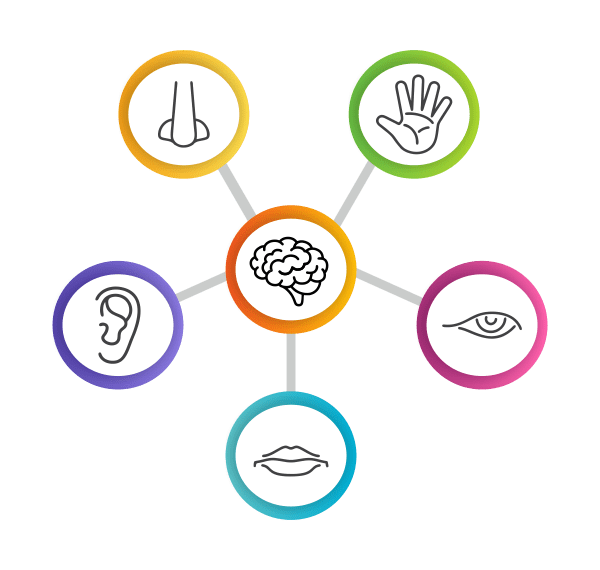
SENSORY TESTS: Verification of the sensory sensitivity
Verification of the sensory sensitivity on Client’s request we conduct sensory tests designed to assess the individual sensory sensitivity of participants.
After tests, there will be prepared the summary results report of the whole group.
Sensory tests are recommended for all people associated with the sensory analysis and its application, as well as for those directly responsible for the product implementation to the market and taking care during production. The tests are recommended in particular for food technologists, marketing teams, quality assurance departments, on-site laboratories, and factory workers involved in the sensory evaluation at the production plants.
Sensory tests are composed of 9 tests including:
- Verification tests for the ability to recognize tastes in liquid solutions (basic taste test)
- Verification tests for the ability to recognize colours
- Verification tests for the ability to recognize odours & memorizing odours
- Verification tests for the ability to use scale
- Test for ranking
- Test for the ability to detect differences between products
- Test to detect differences in intensity of the taste
- Test to check descriptive skills and objectivity
The tests are organised for groups of 6 to max. 12 people in Clients’ locations.
Duration: about 2-3 hours depending on the size and dynamics of the group.
Why is it worth carrying out regular sensory tests checking the sensory sensitivity among your employees?
The answer is simple. If you care about proper quality control of the offered products, employees should regularly undergo sensory tests verifying their sensory ability (I recommend at least once a year).
In order to assess the products’quality, an organoleptic assessment is made using human senses (sight, smell, taste, touch, hearing). In this way, sensory discriminants are investigated, which are one of the main measures of food quality. Sensory attributes: visual, flavour and aroma of products influence the consumer’s perception of the product and, consequently, are critical factors determining the choice of food, chemical products, tobacco products etc. This assessment is made by the employees.
And here it should be remembered that people have different sensory predispositions, and among them there are people who, due to very low sensory sensitivity or certain limitations, such as colour blindness and taste blindness, should not make an organoleptic evaluation of products. Such people are not able to properly assess the product’s quality but for some reasons still often participate in tastings and make decisions.
Colour vision deficiency, commonly known as colour blindness, is a colour recognition disorder. In humans, it manifests itself as the inability to perceive differences between some or all of the colours that are normally perceived by other people. Colour vision deficiency is usually a congenital, genetically determined defect inherited recessively in conjunction with the X chromosome. Therefore, it affects men much more often (approx. 8%) than women (approx. 0.5%). The disorder can also be the result of damage to the visual tract from the retina to the cortex of the brain, as well as the side effect of drugs or chemicals.
The same is the case with taste blindness. A person with this disorder is unable to partially or completely distinguish individual tastes while eating something. These disorders lead to a complete abolition of the taste sensation, but also to the weakening or intensification of the perception of taste stimuli. Some of the causes of this problem lead to a transient taste disturbance, while others may lead to a permanent loss of taste.
Nowadays, it should be also remembered that, unfortunately, some people recovering from COVID-19 often suffer from long-term disturbances of the senses and they experience fake smells and tastes. Among them there are those who struggle for a long time with dysosmia, that is, impairment or a change in the perception of olfactory sensations. For example, they complain that the meat “smells like petrol”, they smell “rotting apples” when drinking prosecco. There are much more odour disorders, according sientists and doctors, after examination COVID-19 survivors. Sometimes odour disorders can be so strong that they effectively hinder normal functioning.
In order to eliminate such people from the decision-making process in matters of product quality, sensory tests for sensory sensitivity are carried out. Thanks to the tests, we can select people with the correct sensory abilities and thus, if possible for a given company, create the best possible product evaluation team, ensuring that a correct organoleptic assessment is made, which translates into product quality at every stage of its cycle.
However, this does not mean that people with very low sensory sensitivity or limitations should be completely excluded from the organoleptic evaluation, but their opinion should be neither crucial nor decisive.
As part of Consumer Insight Consulting, we conduct sensory tests both at the client’s place or outside, and we evaluate each person individually and the entire team.
We also carry out tests as part of sensory workshops, which additionally increase the awareness of what sensory analysis of food is, how it can be used at work, and teach how to make a proper organoleptic assessment.
QUICK CONTACT

